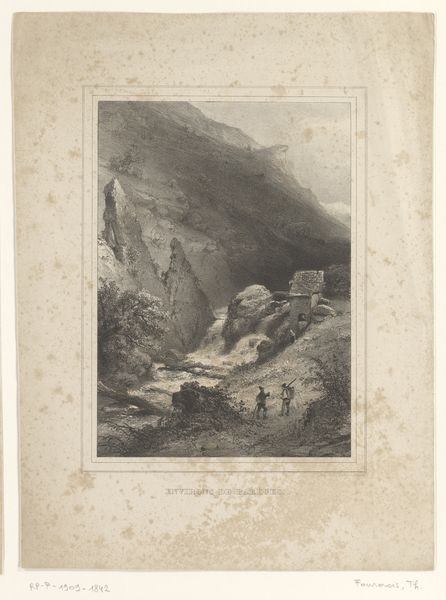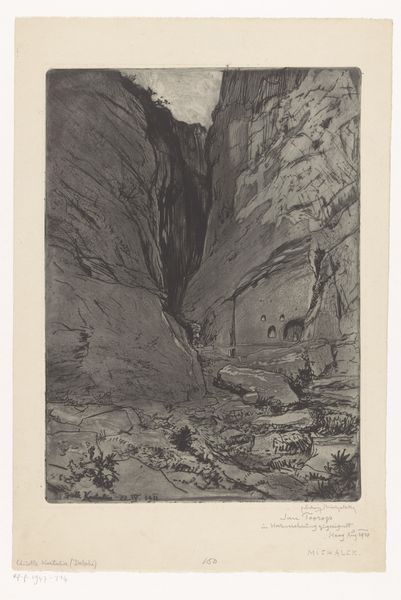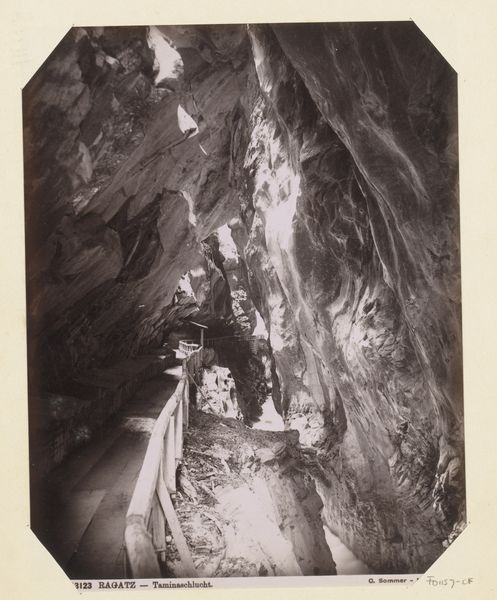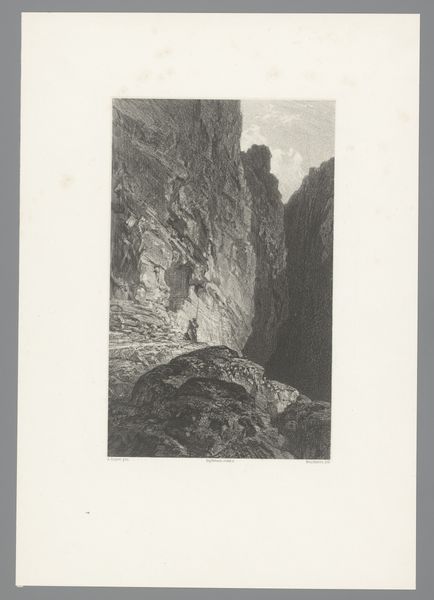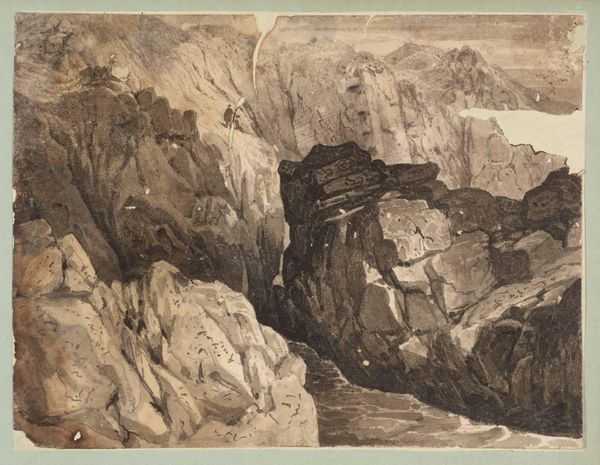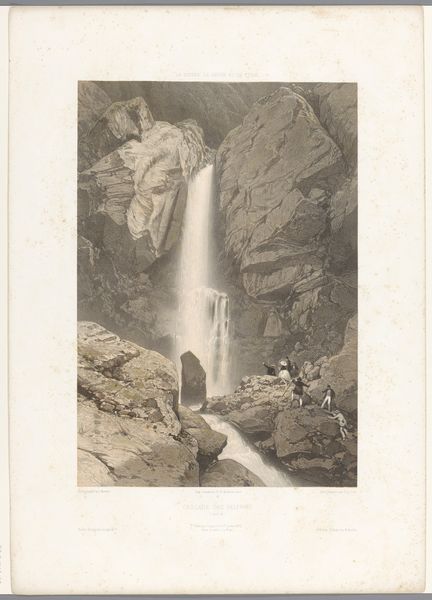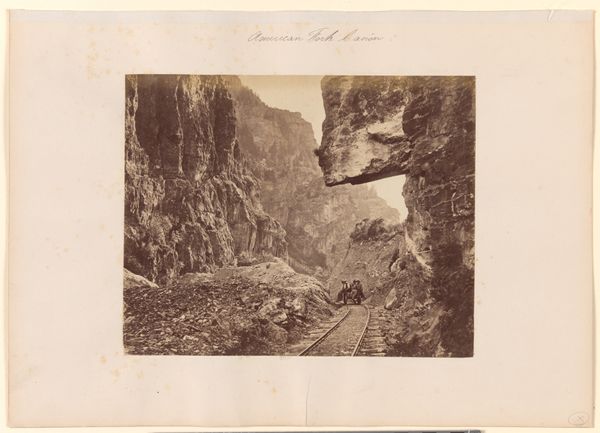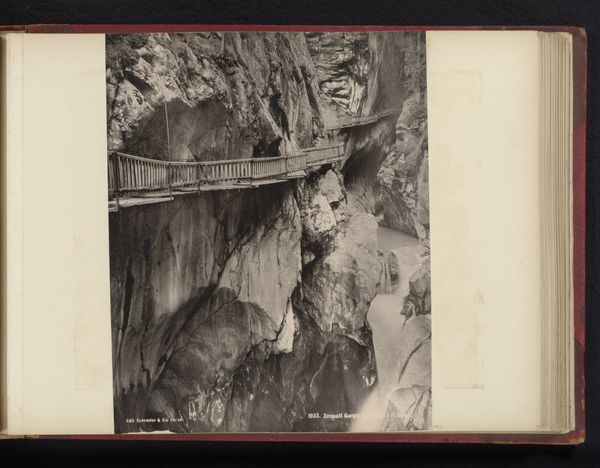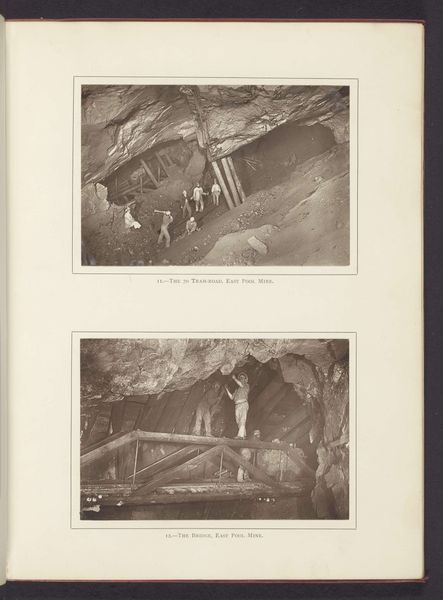
Bezoekers van de medicinale baden van Pfäfers in de middeleeuwen 1859
0:00
0:00
eugeneciceri
Rijksmuseum
Dimensions: height 565 mm, width 400 mm
Copyright: Rijks Museum: Open Domain
Editor: This is Eugène Cicéri's "Visitors of the Medicinal Baths of Pfäfers in the Middle Ages," created in 1859. It's an engraving, and it’s remarkably detailed. There's such a strong emphasis on the landscape, it feels a bit imposing...almost industrial despite its romantic style. How would you interpret it? Curator: Considering it’s an engraving, look at the means of production here. Think of the labor involved in creating such precise lines to depict the rocky formations, the water, even the visitors. We see a constructed, material reality. The print emphasizes not only the picturesque qualities, but also the resourcefulness used to exploit even dangerous locations for health or commerce. Note the building clinging to the cliff; this reflects a human alteration of the landscape, and also the specific social structures and needs that facilitated that kind of project. Do you see any kind of interplay there? Editor: I see that the buildings suggest more than just survival or even beauty, they represent infrastructure—a service industry geared toward medicinal tourism. The effort behind just getting materials to such a site must have been enormous! It puts a different lens on the aesthetic. Curator: Exactly. So it’s about moving beyond simple genre and asking: what materials and labor created the access to such dramatic vistas, and who controlled that access? How would you now consider the value assigned to those images based on this production? Editor: It changes things, acknowledging all of the human, material, and economical labor that went into this image is very interesting. Curator: Agreed. Reflecting on the value in this approach offers a unique layer for understanding even seemingly straightforward artwork. We see value beyond just surface appeal.
Comments
No comments
Be the first to comment and join the conversation on the ultimate creative platform.
